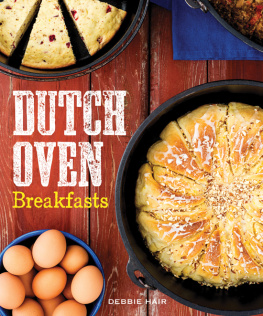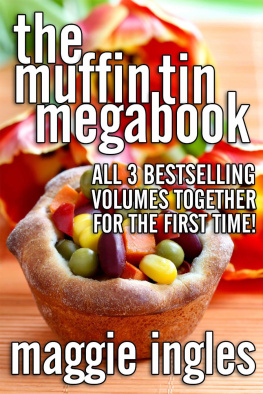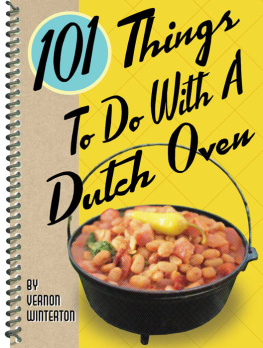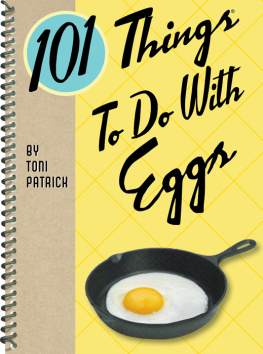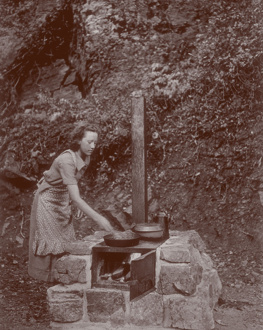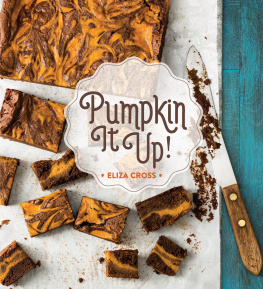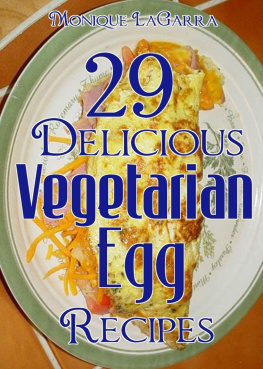Introduction
Magic! I love magic and trying to figure out the sleight of hand. Dutch ovens are magical. I remember as a young girl watching Dutch oven cooks work magic and then placing the best food on our plates. When I moved to Utah, some of my new neighbors were legendary Dutch oven cooks. They allowed me to tag along on a few of their catering gigs to help them cook. From these experiences, I was able to learn the sleight of hand. That is, the technique of producing fabulous food from the cast iron vessel. The trick is using a good recipe, quality ingredients, and understanding proper heat control. I hope this book helps you enjoy the magic!
Dutch Oven Heat Control
Dutch ovens are well known for their baking capability, but they also can be used for simmering, boiling, sauting, broiling, deep frying, and even freezing ice cream.
The number one rule of Dutch oven cooking is that it is easier to add heat to a Dutch oven than it is to cool a hot oven down. Start with a conservative number of coals and then add more if necessary.
When baking, the heat source comes from both underneath and on top of the Dutch oven. See the below chart for a handy guide to know how many coals to place underneath the oven and how many coals to place on top of the oven to achieve a specific baking temperature. Place the bottom coals in a ring about the size of the oven. Set the oven over the ring and then place the top coals on the lid along the flange in a ring toward the outer edge.
When simmering and sauting , the heat source comes from underneath the Dutch oven. Use the diameter of the oven to determine the number of coals that should be placed under it. The general rule is the diameter times 2. For example, a 12-inch Dutch oven would need 24 coals. If you need a slower simmer or saut, reduce the number of coals by 4.
When deep frying , the heat source comes from underneath the Dutch oven. A full bed of coals is necessary. Use a thermometer and adjust the number of coals to achieve 375400 degrees. Begin with number of coals equaling the diameter of the Dutch oven doubled and add from there.
When broiling , all the heat is on the lid. Use the number of coals equaling the diameter of the Dutch oven doubled.
The above information is a good starting point; however, you often need to make heat adjustments due to weather conditions. If cooking when the weather is cooler than 60 degrees, you will need to add a few more coals1 underneath the oven and 2 on the lid (more if using a large oven). If cooking in 90 degree weather or above, consider reducing the number of coals.
If cooking in high altitudes, add more heat. Cooking times will also take longer.
No matter what the conditions, always keep your eye on your pots and adjust as necessary. And as Dutch oven expert Colleen Sloan teaches, You will not need a timer to tell when your dishes are done. Your nose will tell ya!
Useful Tools
Gloves with long sleeves for protecting hands and arms from the heat.
Lid lifters for lifting very hot lids.
Long handled tongs for moving hot coals.
Trivets to set the lid on so that it is not on the ground. Trivets can be used to keep hot ovens off tables and will also hold your lid upside down so it can be used as a griddle.
A whisk broom to brush the ashes off the lids of the Dutch ovens.
A cook table is great. It lifts your work area off the ground and prevents you from bending over so much.
A metal bucket to hold the spent coals.
A windbreak of some type to help keep your coals burning evenly on a windy day. I use old license plates and stand them on end. The windbreaks provided with cook tables are often too short to protect the coals on the lid of the Dutch oven. A binder ring can be used to connect the plates together.
Helpful Hints
Lighting coals
The standard method for lighting coals is to stack the number of needed coals in a pyramid. Soak with lighter fluid and then light with a match and let them burn until the corners of the coals become white.
But my favorite way to light the coals is a bit easieruse a charcoal chimney (or sometimes called a basket) and a propane stove. Place the number of coals needed in the chimney and set on the stove. Light the stove and turn the flame up high. Let the coals burn for about 5 minutes and then shake the chimney so that the top coals shake down to the bottom. Put the chimney back on the flame for a few more minutes. When the corners of the coals are white, they are hot and ready.
Seasoning your Dutch oven
Most Dutch ovens come preseasoned, but I prefer to clean and oil any new oven. This is also how you prepare a new Dutch oven that has not been preseasoned. Wash, rinse, and dry your Dutch oven and lid. Rub a layer of oil on the inside and outside of your oven and lid and bake in a 450 degree oven for 30 minutes. The oil may smoke as it is burned into the pores of the Dutch oven. After the oven has cooled, wipe off any excess oil and store with paper towels placed inside your oven. Allow the edge of the paper towels to partly hang outside the oven. This will allow for air circulation and will prevent rust from forming.
Cleaning your Dutch oven
Cleaning a Dutch oven is fairly easy. Scrape out any leftover food with a stiff plastic brush or plastic scraper and rinse oven with warm water to completely remove any food particles. Dry oven over heat (over open flame, coals, or in your kitchen oven) just long enough to completely dry your oven. Wipe with an oiled cloth to coat oven with thin layer of oil. This will protect the seasoning and prevent rusting. Do not be tempted to use too much oil. If you use too much oil or store for a long period of time, the oil may turn rancid.
Storing your Dutch oven
After you clean your Dutch oven, place a couple of paper towels in the bottom and up the sides of the oven and allow an edge to hang out under the lid so that air can circulate. Store ovens in a cool dry place.
Biscuit tips
It is easy to overwork biscuit dough. Overworked dough will cause the biscuits to turn out tough.
Use a fork to cut in shortening into the dry ingredients.
When adding liquids, use a fork and work quickly.
Knead dough only a few times and roll dough only as many times as it takes to get desired thickness.
Biscuits will rise better if the dough is cut without using a twisting motion, and cut biscuits as close together as possible. Be gentle when pressing the dough scraps together for a second cutting. The second biscuits will not rise as nicely as the first cut ones.

